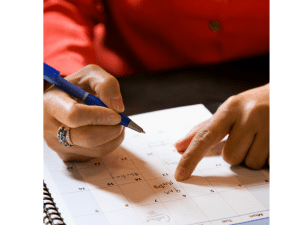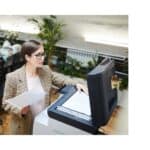Resources for N.A.P.S. Schools

Mark Your Calendar
October 1 - November 3, 2025 - Annual Accreditation Fee Due: $325
November 3, 2025 - $50 Late Fee
New Standard: Safety and Security
This article outlines basic safety and security recommendations for private Christian schools. It is designed to support a safe environment that honors our biblical values while providing a secure space for students, staff, and visitors.
1. Check-In / Check-Out Policy
Goal: Manage who enters and exits the campus during school hours.
Visitors must check in at the main office, show ID, and wear a visitor badge.
Only approved individuals may pick up students and must show ID.
Students leaving early must be signed out by someone authorized.
2. Lockdown Procedures
Goal: Keep everyone safe during serious threats.
Lockdowns are announced by administration when danger is present.
Teachers lock doors, turn off lights, and keep students quiet and out of sight.
No one may enter or leave a room until an “all clear” is given.
Exterior doors stay locked during the school day.
3. Drills and Door Security
Goal: Be ready for emergencies and keep doors secure.
Fire, tornado, and lockdown drills are held regularly based on local guidelines.
Teachers review drill plans with students each semester.
Doors should lock from the inside and be kept shut when not in use.
Door closers should be installed where possible.
4. Two-Person Policy
Goal: Prevent inappropriate situations and protect students and staff.
Adults should never be alone with a student in a private setting.
Two approved adults must be present during counseling or discipline.
Rooms used for student meetings must have visibility (e.g., door windows).
Volunteers must complete training before working with students.
5. Camera Use
Goal: Help monitor key areas and deter unsafe behavior.
Cameras are placed in public zones like entrances, halls, and playgrounds.
No cameras are allowed in restrooms or counseling rooms.
Footage may be reviewed by administration or shared with law enforcement as needed.
Video is stored and used according to school policy.
6. Windows on Doors
Goal: Keep student interactions visible and accountable.
Classrooms and offices should have windows or partial visibility.
Windows should not be covered unless under lockdown.
Counseling spaces should be visible and located near other staff.
7. Background Checks
Goal: Ensure only qualified and safe adults interact with students.
All staff and volunteers must pass a background check before starting.
Checks are renewed every three years or upon re-hiring.
Anyone with a history of violence, abuse, or sexual offenses is disqualified.
8. Backpack Policy
Goal: Prevent contraband and maintain a secure classroom environment.
Backpacks are stored in lockers or designated areas.
The school reserves the right to search bags, lockers, or personal items on campus.
Clear or mesh backpacks may be required for upper-grade students.
Possession of banned items (weapons, drugs, vapes, etc.) will result in disciplinary action.
9. Cell Phone Use
Goal: Reduce distractions and maintain focus and safety.
Students may not use phones during class unless allowed by a teacher.
Phones should be stored away during the school day.
Students may not record others without permission.
10. Internet Use Protocol
Goal: Protect students online and keep school technology safe.
School internet use must be educational and appropriate.
Internet traffic is filtered to block harmful content:
Pornography and explicit material
Violence, hate, and criminal content
Drugs, gambling, and alcohol
Social media and dating sites
VPNs or tools used to get around filters
Safe Search is enforced on all school devices.
Students must use their school accounts.
Installing outside software or extensions is not allowed.
All internet activity may be monitored. Students should not expect privacy on school devices.
Parents will be informed about internet safety efforts and may request reports.
Misuse of internet access may lead to disciplinary action or loss of privileges.
11. Abuse Prevention Policy
Purpose: To protect students from all forms of abuse and maintain a culture of safety.
11.1 Mandatory Reporting
All staff and volunteers are required to report suspected abuse or neglect immediately to proper authorities.
Verbal reports must be followed by written documentation within 24 hours.
11.2 Screening and Training
All adults working with students undergo background checks and abuse prevention training.
Training covers both Christian ethics and legal duties.
11.3 Supervision and Conduct
Adults must not be alone with a child out of sight of others.
Physical contact should be appropriate and never forceful.
One-on-one meetings must happen in rooms with visibility.
Staff must not message students privately or give gifts without approval.
11.4 Communication and Reporting
Digital communication with students must go through school-approved systems.
Concerning messages must be reported.
Students are taught about personal boundaries and how to report abuse.
11.5 Responding to Abuse
Do not investigate or confront the accused directly.
Report concerns to school leadership and child protection authorities.
Keep the information private and report only facts.
11.6 Protection for Reporters
No one who reports abuse in good faith will face punishment or retaliation.
National Child Abuse Hotline
📞 1-800-4-A-CHILD (1-800-422-4453)
12. School Facility Safety
12.1 Building Access and Exits
Entrances must be secured during school hours; visitors enter through the main office.
Emergency exits must remain clear and unlocked (with alarms).
Exit signs must be lit and evacuation maps posted in halls and classrooms.
Staff must report any suspicious or unknown individuals.
12.2 Cleanliness and Order
Hallways, restrooms, and classrooms must be clean and safe.
Trash and recycling must be handled daily.
Water fountains and bottle fillers must be functional and cleaned regularly.
12.3 Trip Hazards and Cord Safety
Cords should be secured away from foot traffic.
Rugs and furniture must be arranged to prevent tripping.
Walkways and stairways must remain clear.
12.4 Room Access
All frequently used spaces must meet ADA accessibility standards.
Restricted areas (mechanical, IT, supply storage) must remain locked.
Students are only allowed in areas appropriate for their age and role.
12.5 Safety Checks
Staff complete daily checks for doors, signage, hazards, and supplies.
All hazards or security issues are reported to the office immediately.
A monthly review of safety concerns should be conducted by leadership.
12.6 Staff Training
All staff receive yearly training on:
Evacuation plans
Reporting hazards
Securing restricted areas
Facility safety and cleanliness
Visitors must check in at the main office, show ID, and wear a visitor badge.
Only approved individuals may pick up students and must show ID.
Students leaving early must be signed out by someone authorized.
Lockdowns are announced by administration when danger is present.
Teachers lock doors, turn off lights, and keep students quiet and out of sight.
No one may enter or leave a room until an “all clear” is given.
Exterior doors stay locked during the school day.
Fire, tornado, and lockdown drills are held regularly based on local guidelines.
Teachers review drill plans with students each semester.
Doors should lock from the inside and be kept shut when not in use.
Door closers should be installed where possible.
Adults should never be alone with a student in a private setting.
Two approved adults must be present during counseling or discipline.
Rooms used for student meetings must have visibility (e.g., door windows).
Volunteers must complete training before working with students.
Cameras are placed in public zones like entrances, halls, and playgrounds.
No cameras are allowed in restrooms or counseling rooms.
Footage may be reviewed by administration or shared with law enforcement as needed.
Video is stored and used according to school policy.
Classrooms and offices should have windows or partial visibility.
Windows should not be covered unless under lockdown.
Counseling spaces should be visible and located near other staff.
All staff and volunteers must pass a background check before starting.
Checks are renewed every three years or upon re-hiring.
Anyone with a history of violence, abuse, or sexual offenses is disqualified.
Backpacks are stored in lockers or designated areas.
The school reserves the right to search bags, lockers, or personal items on campus.
Clear or mesh backpacks may be required for upper-grade students.
Possession of banned items (weapons, drugs, vapes, etc.) will result in disciplinary action.
Students may not use phones during class unless allowed by a teacher.
Phones should be stored away during the school day.
Students may not record others without permission.
School internet use must be educational and appropriate.
Internet traffic is filtered to block harmful content:
Pornography and explicit material
Violence, hate, and criminal content
Drugs, gambling, and alcohol
Social media and dating sites
VPNs or tools used to get around filters
Safe Search is enforced on all school devices.
Students must use their school accounts.
Installing outside software or extensions is not allowed.
All internet activity may be monitored. Students should not expect privacy on school devices.
Parents will be informed about internet safety efforts and may request reports.
Misuse of internet access may lead to disciplinary action or loss of privileges.
11. Abuse Prevention Policy
All staff and volunteers are required to report suspected abuse or neglect immediately to proper authorities.
Verbal reports must be followed by written documentation within 24 hours.
All adults working with students undergo background checks and abuse prevention training.
Training covers both Christian ethics and legal duties.
Adults must not be alone with a child out of sight of others.
Physical contact should be appropriate and never forceful.
One-on-one meetings must happen in rooms with visibility.
Staff must not message students privately or give gifts without approval.
Digital communication with students must go through school-approved systems.
Concerning messages must be reported.
Students are taught about personal boundaries and how to report abuse.
Do not investigate or confront the accused directly.
Report concerns to school leadership and child protection authorities.
Keep the information private and report only facts.
No one who reports abuse in good faith will face punishment or retaliation.
Entrances must be secured during school hours; visitors enter through the main office.
Emergency exits must remain clear and unlocked (with alarms).
Exit signs must be lit and evacuation maps posted in halls and classrooms.
Staff must report any suspicious or unknown individuals.
Hallways, restrooms, and classrooms must be clean and safe.
Trash and recycling must be handled daily.
Water fountains and bottle fillers must be functional and cleaned regularly.
Cords should be secured away from foot traffic.
Rugs and furniture must be arranged to prevent tripping.
Walkways and stairways must remain clear.
All frequently used spaces must meet ADA accessibility standards.
Restricted areas (mechanical, IT, supply storage) must remain locked.
Students are only allowed in areas appropriate for their age and role.
Staff complete daily checks for doors, signage, hazards, and supplies.
All hazards or security issues are reported to the office immediately.
A monthly review of safety concerns should be conducted by leadership.
All staff receive yearly training on:
Evacuation plans
Reporting hazards
Securing restricted areas
Facility safety and cleanliness

Online Screening Platform
*** Special Pricing for N.A.P.S. Schools ***
Datasource Background Screening Services
(800) 431-8315
Support@datasourcecorp.com

National Center for Life and Liberty
NCLL is ready to assist you in your ministry’s legal matters. Become a partner today and receive the legal advice and representation that your ministry needs.
A Guide to Digitizing Students' Academic Records

Paper piles overflowing your office? Retrieving records turning into a treasure hunt? In today's digital age, clinging to physical student academic records is not only inefficient but also a burden on resources and accessibility. Embracing digital transformation is the key to streamlining record management, boosting efficiency, and reducing operating costs.
Why Digitize?
The benefits of digitizing student academic records are numerous:
• Enhanced Accessibility: Records become instantly accessible anywhere, anytime, on any device with proper authorization. No more chasing down files or requesting transcripts months in advance.
• Improved Security: Digital records are safeguarded from physical damage, loss, or unauthorized access. Data backups and encryption provide an extra layer of protection.
• Increased Efficiency: Administrative tasks like record retrieval, analysis, and reporting become significantly faster and more accurate. Data can be easily aggregated and filtered for insights.
• Decreased Vulnerability: Non-digitized school records are susceptible to damages from natural disasters, human mishandling, and vandalism.
• Reduced Costs: Less reliance on physical storage space, paper, and manual processes translates to significant cost savings in the long run.
• Environmental Impact: Digitization minimizes paper usage and carbon footprint, lessening the impact on the environment.
Taking the Leap:
Making the transition to a digital system requires careful planning and execution. Here are some key steps:
• Phased Implementation: Consider digitizing in phases, starting with the most recent or frequently accessed records. This minimizes disruption and allows for adjustments as needed.
• Hard Drive Storage and Cloud Storage: Large amounts of data can be stored locally and in the cloud. Security is the top priority (Please read the article on keeping your school’s student records safe).
• Scanner/Copier: Implement scanning of student records with an inexpensive all-in-one scanner with at least 300 dpi capabilities. Utilizing the .PDF format allows for cross-platform accessibility.

Beyond the Basics:
Once your system is in place, explore further digitalization opportunities:
• Saving and Retrieval: Carefully plan the archival system for your records. Of course, think of it as a file cabinet and create a folder for each student record using a label with “last name, first name”.
• Backup the Data: Be sure to implement a cloud backup if the records are stored on a local device (Please read the article on keeping your school’s student records safe).
Embracing the Future while Preserving the Past:
Digitizing student academic records is not just a technological upgrade; it's a strategic shift towards a more efficient, secure, and student-centered learning environment. By proactively embracing digital transformation, school administrators can ensure their school is well-equipped to navigate the demands of the 21st-century educational landscape. So, take the first step today and unlock the future of student record management in your school.
Remember: This is just a starting point. Be sure to customize your approach based on your school's specific needs and resources. With careful planning and a commitment to digital advancement, you can create a streamlined and secure system that benefits students, staff, and the entire school community.
Be sure to read the next article:

Keeping Your Student Records Safe

Fortressing Knowledge:
In an age where data is prized and vulnerability lurks online, safeguarding student information has become paramount. Schools hold a treasure trove of sensitive data – academic records, disciplinary files, health reports – entrusted to them by families. Protecting this information from unauthorized access, breaches, and misuse is an ethical and legal imperative. Here's a comprehensive guide to keeping students' academic records secure:
Understanding the Landscape:
• FERPA: The Family Educational Rights and Privacy Act (FERPA) sets the federal baseline for protecting student data. It defines what “education records” are, who has access, and when consent is required for disclosure. Familiarity with FERPA’s guidelines is crucial for schools.
• State and Local Laws: Alongside FERPA, many states have additional student privacy laws, often stricter in nature. Research and comply with applicable state and local regulations to ensure complete coverage.
• Third-Party Vendors: Many schools utilize third-party software and services for tasks like online learning or grading. Scrutinize data-sharing agreements with these vendors and ensure they align with student privacy policies.
Building Digital Defenses:
• Access Control: Limit access to student records to authorized personnel based on their “need to know.” Implement multi-factor authentication for sensitive systems and regularly review access privileges.
• Data Encryption: Encrypt student data both at rest (stored) and in transit (transmitted). This scrambles information, making it unreadable for unauthorized actors even if compromised.
• Secure Storage: Physical records should be securely stored in locked fireproof cabinets or specialized facilities. Electronically stored data should be housed in secure servers with regular backups with disaster recovery plans.
• Incident Response: Develop a clear plan for responding to data breaches, including notification procedures, containment measures, and remediation steps. Review this plan regularly with authorized staff.
Transparency and Education:
• Clear Policies: Develop and maintain clear, easy-to-understand policies on student data privacy. These policies should be readily available to parents, students, and staff.
• Regular Training: Train staff on student data privacy policies and procedures, including secure handling and reporting of potential breaches. Regularly update training to reflect changes in technology and regulations.
• Parental Involvement: Inform parents about their rights under FERPA and how their child’s data is accessed, used, and protected. Provide avenues for parents to review and request corrections to their children’s records.
Staying Vigilant:
• Regular Assessments: Conduct periodic risk assessments to identify potential vulnerabilities in data security practices. Adapt and update security measures based on these assessments.
• Monitoring and Logging: Monitor system activity for suspicious behavior and log access attempts to student records. Investigate any anomalies promptly and thoroughly.
• Open Communication: Encourage a culture of open communication among staff and students regarding data security concerns. Promote safe reporting mechanisms for potential breaches or suspicious activity.
Protecting student academic records is an ongoing commitment, not a one-time task. By adopting a comprehensive approach that combines legal compliance, robust security measures, and open communication, schools can create a safe haven for student data, fostering trust and learning within their stakeholder communities.
Additional Resources:
• U.S. Department of Education’s Student Privacy website: https://studentprivacy.ed.gov/
• National Center for Education Statistics’ FERPA resources: https://studentprivacy.ed.gov/faq/what-education-record
• American Association of School Administrators’ Data Privacy Toolkit: https://www.aasa.org/resources/student-child-privacy-center



